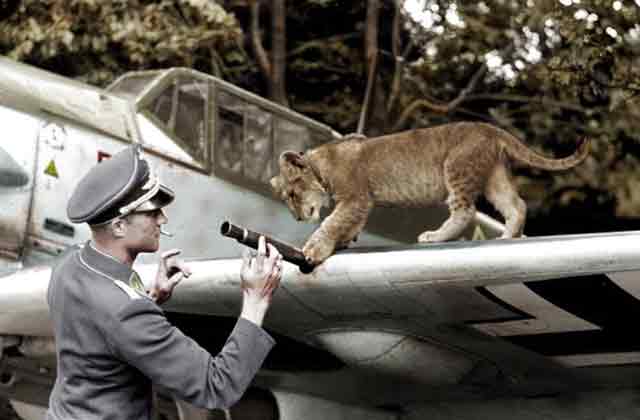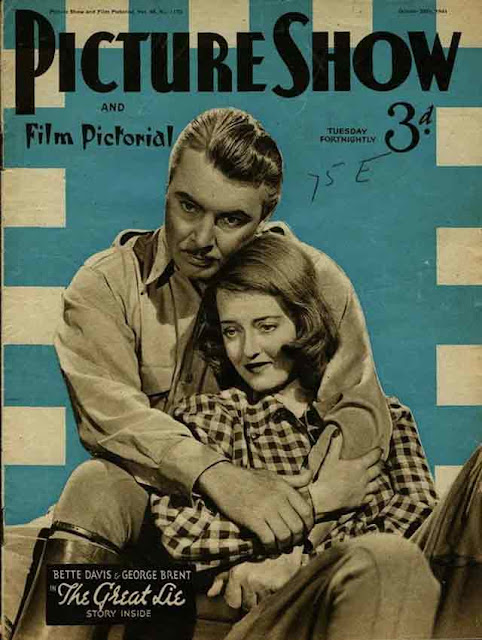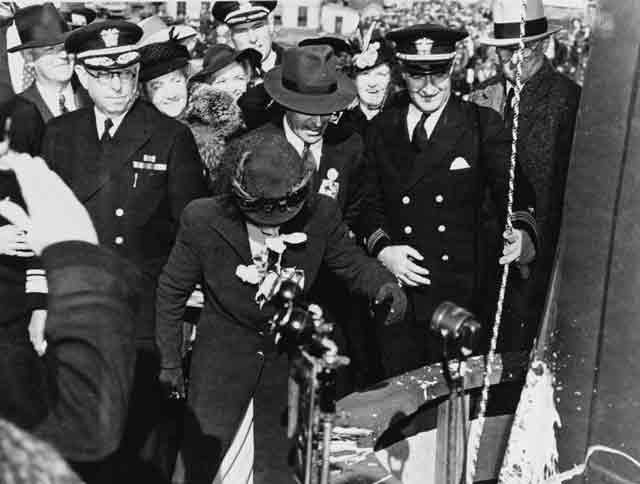Saturday 25 October 1941
 |
| Franz Baron von Werra, KIA 25 October 1941, and Simba. |
 |
| George Brent and Bette Davis promoting "The Great Lie" on the cover of Picture Show magazine, 25 October 1941. |
The practice of executing scores of innocent hostages in reprisal for isolated attacks on Germans in countries temporarily under the [Third Reich] heel revolts a world already inured to suffering and brutality. Civilized peoples long ago adopted the basic principle that no man should be punished for the deed. of another. Unable to apprehend the persons involved in these attacks the [German] characteristically slaughter fifty or a hundred innocent persons. Those who would "collaborate" with Hitler or try to appease him cannot ignore this ghastly warning.
The [Germans] might have learned from the last war the impossibility of breaking men's spirits by terrorism. Instead, they develop their lebensraum and "new order" by depths of frightfulness which even they have never approached before. These are the acts of desperate men who know in their hearts that they cannot win. Frightfulness can never bring peace to Europe. It only sows the seeds of hatred which will one day bring fearful retribution.There is little question that this statement, particularly the closing words, "which will one day bring fearful retribution," is a veiled threat to Hitler.
 |
| The Camden (Arkansas) News, 25 October 1941. Unlike in 1939 or 1940, the entire front page of local newspapers now is war news. |
 |
| HMS Welshman (an Abdiel class cruiser minelayer) in Plymouth, 25 October 1941 (© IWM (A 6044)). |
 |
| Wehrmacht soldiers launching a weather balloon in Tunisia, 25 October 1941 (Photo: Berliner Verlag/Archiv. - Unbekannt/Tunisia). |
 |
| Franz Baron von Werra. |
 |
| Mrs. Harry I. Lucas christens USS Juneau (CL-52), 25 October 1941. Sunk off Guadalcanal on 13 November 1942 (U.S. Navy). |
British Military: Admiral Sir Tom Phillips, newly appointed commander of Force Z and Commander-in-Chief of the China Station, departs from Great Britain in command of his fleet. His command includes his flagship, the new battleship HMS Prince of Wales, together with the veteran Great War-era battlecruiser HMS Repulse, and the four destroyers HMS Electra, HMS Express, HMS Encounter, and HMS Jupiter. They are heading for Singapore to reinforce the massive naval base there. Force Z arrives there on 2 December 1942.
Holocaust: While Hitler officially has suspended his euthanasia program due to broad public disapproval, stirred over the summer by sermons by Bishop Galen and others, in reality, the program continues in secret. Those euthanasia "experts" are now in high demand. Due to conquests in the East that have brought in new hordes of "undesirables," the authorities there are looking for more efficient killing solutions. Erhard Wetzel, an official in charge of race questions for the Ministry of Occupied Eastern Territories, comes up with an idea: why not gas them? He writes a letter to Hinrich Lohse, Reich Commissioner for the Ostland territories, suggesting that those who were working on the euthanasia program be used to implement this solution. They can, he suggests, construct gas chambers in which to eliminate large groups of people, primarily deported Jewish people who are unfit to work. Wetzel's suggestion is not acted upon immediately but reflects a growing consensus within the Reich security forces that simply shooting large numbers of people is inefficient, time-consuming, and bad for morale.
Riga Ghetto is established.
 |
| Sweden's new ministers in Copenhagen, Envoyé and Mrs Gustaf von Dardel, 25 October 1941. |
October 1941
October 1, 1941: Germans and Finns Advance in USSR
October 2, 1941: Operation Typhoon Broadens
October 3, 1941: Air Battles Near Moscow
October 4, 1941: Stalin Contemplates Defeat
October 5, 1941: Hoth Goes South
October 6, 1941: First Snowfall After Dark
October 7, 1941: Stalin Gets Religion
October 8, 1941: FDR Promises Stalin Aid
October 9, 1941: FDR Orders Atomic Bomb Research
October 10, 1941: Reichenau's Severity Order
October 11, 1941: Tank Panic in Moscow
October 12, 1941: Spanish Blue Division at the Front
October 13, 1941: Attack on Moscow
October 14, 1941: Germans Take Kalinin
October 15, 1941: Soviets Evacuate Odessa
October 16, 1941: Romanians Occupy Odessa
October 17, 1941: U-568 Torpedoes USS Kearny
October 18, 1941: Tojo Takes Tokyo
October 19, 1941: Germans Take Mozhaysk
October 20, 1941: Germans Attack Toward Tikhvin
October 21, 1941: Rasputitsa Hits Russia
October 22, 1941: Germans Into Moscow's Second Defensive Line
October 23, 1941: The Odessa Massacre
October 24, 1941: Guderian's Desperate Drive North
October 25, 1941: FDR Warns Hitler About Massacres
October 26, 1941: Guderian Drives Toward Tula
October 27, 1941: Manstein Busts Loose
October 28, 1941: Soviet Executions
October 29, 1941: Guderian Reaches Tula
October 30, 1941: Guderian Stopped at Tula
October 31, 1941: USS Reuben James Sunk
2020
No comments:
Post a Comment